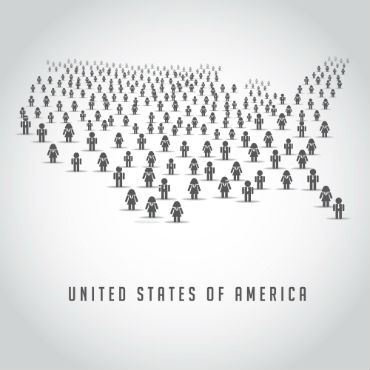Feds will be watching for 2020 census stuffers

The decennial count might stress inclusive approaches, but that doesn't mean no one's checking for fraud.

With a new CIO inbound and major contract awards approaching, the Census Bureau is gearing up for a 2020 count that the officials hope will be both inclusive and accurate.
"Fraud's not any part of this process," said Tim Trainor, chief of the Census Bureau's Geography Division, at a FedScoop event on May 18. "We would shut that down in a minute if we became aware of it."
In a bid to reach all Americans, Census plans to award contracts for mobile and social outreach work this summer. The bureau expects 55 percent of respondents to check in online instead of with an enumerator in person.
But Trainor said good data, including geographic data, will help root out fraud.
"We're very good at matching data -- person records, location records, all those kinds of things -- to be sure that we have complete and accurate information," he said.
Because the decennial count forms the basis of political apportionment, it's crucial to prevent any "stuffing the census box" situations, Trainor said, so bureau officials are using data from other agencies to help verify its own address list and other records.
"We really go to great lengths to ensure that we get the right count at the lowest level of geography possible," he said. "When you think about things like redistricting...whether you're on one road block or the other road, that can make a big difference in who your voting population is, and so these things are really critical."
Besides helping detect fraud, geographical data will help Census cut costs.
"We walked hundreds of millions of miles in 2010 checking the address list," Trainor said. "We're not going to do it that way this time."
Currently, Census has a team in Indiana comparing the bureau's address list to satellite imagery supplied by the National Geospatial-Intelligence Agency. Trainor said the method isn't foolproof -- trees or hills could block a home from view, for instance -- so they'll still need to check some housing units in person, but the approach will save an immense amount of time.
Census will also use vacancy information gathered by the U.S. Postal Service to keep enumerators from making repeat visits to empty dwellings.
Technology should help the 2020 census be slightly less taxing than prior counts.
"I've been through four censuses," Trainor said. "This is the most innovative census that I've ever been participating in."
But it will never be a cakewalk, he added, saying of the decennial count, "It's like going to war, without the guns."
In other Census news, Commerce Department CIO Steve Cooper testified May 18 that the bureau has chosen a new CIO.
"We have made a selection, and that individual will be moving into that office," Cooper told the House Oversight and Government Reform Committee at a hearing on the implementation of IT acquisition law. "I apologize I do not know the specific timing, but very shortly."
Census has lacked a permanent CIO since July 2015, and the committee has been hounding the bureau to name a technology leader.
When one lawmaker essentially asked Cooper to handle the role of Census CIO himself, he demurred but promised to push the bureau to get the new hire working as soon as possible.
"I will then commit to working directly with that individual...to help that individual come up to speed as rapidly as possible," Cooper said.


